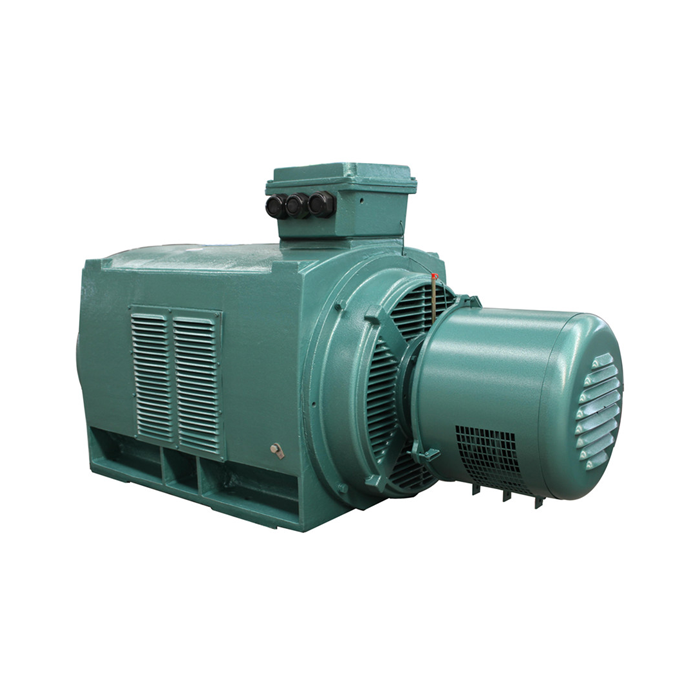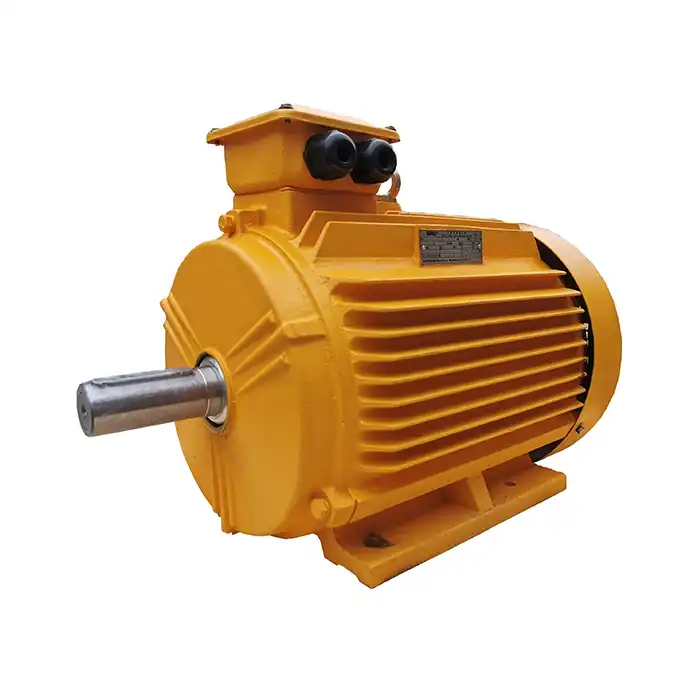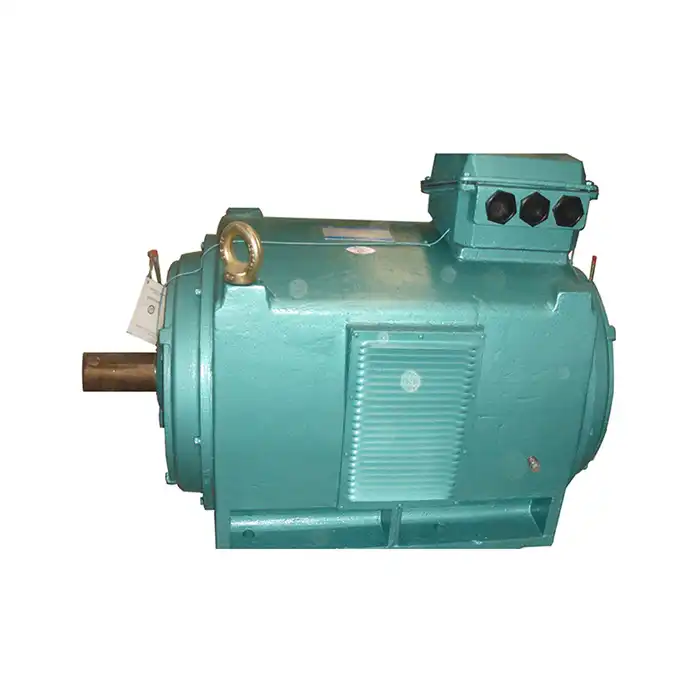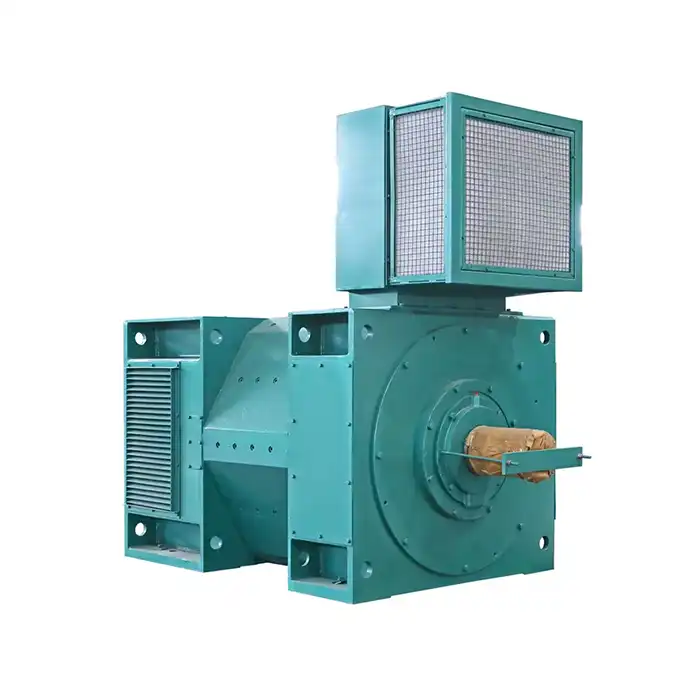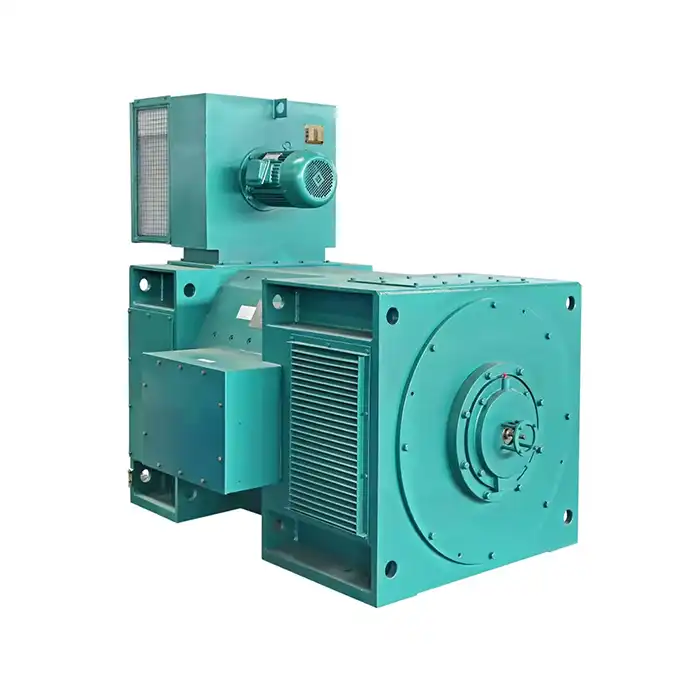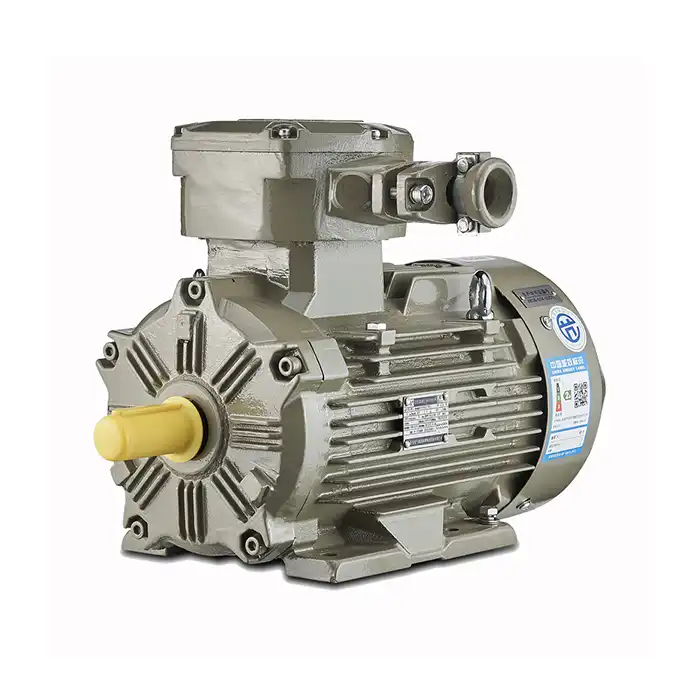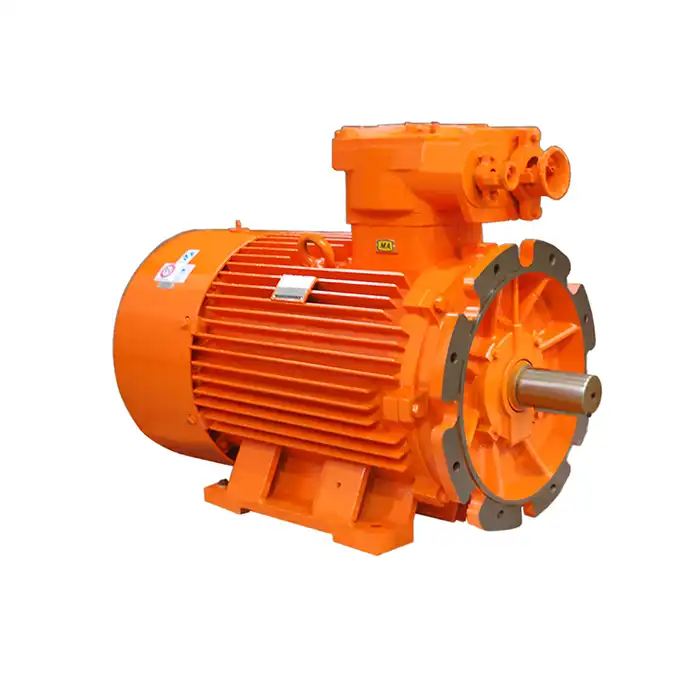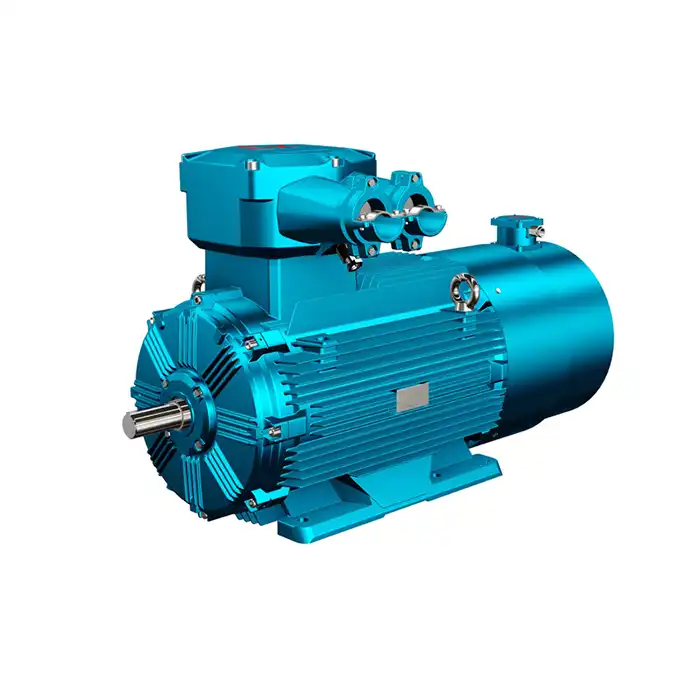Heat's Impact on DC Motor Efficiency
Temperature fluctuations can significantly affect the efficiency and overall performance of 200hp DC motors. Let's examine the various ways heat influences these motors:
Increased Electrical Resistance
As temperature rises, the electrical resistance of the motor's windings increases. This phenomenon, known as the positive temperature coefficient of resistance, can lead to:
- Reduced motor efficiency: Higher resistance results in greater energy losses in the form of heat, which reduces the overall efficiency of the motor. This means more energy is required to perform the same amount of work, leading to suboptimal performance.
- Increased power consumption: With increased resistance, the motor draws more power to maintain its output. This leads to higher electricity consumption, especially under extended operating conditions, which can significantly raise energy costs.
- Higher operating costs: As the motor works harder to overcome the increased resistance, it generates more heat and experiences additional wear and tear. This accelerates the need for repairs or replacements, ultimately increasing maintenance and operational costs.
Magnetic Property Changes
Excessive heat can alter the magnetic properties of the motor's components, resulting in:
- Decreased magnetic field strength: High temperatures can cause the motor's magnetic field to weaken, which directly reduces its ability to generate force. This loss of magnetic strength compromises the motor's overall efficiency and effectiveness.
- Reduced torque output: As the magnetic properties weaken, the motor struggles to maintain its torque output, leading to reduced performance. This may result in the motor failing to meet load demands, causing operational inefficiencies and potential downtime.
- Potential demagnetization of permanent magnets in some motor designs: In some motor designs, particularly those that use permanent magnets, excessive heat can lead to demagnetization. Once demagnetized, these magnets lose their ability to generate the necessary magnetic fields, ultimately causing the motor to malfunction or fail entirely.
Mechanical Stress and Wear
High temperatures can cause mechanical stress on various motor components, leading to:
- Accelerated wear of bearings and other moving parts: Increased temperatures cause parts like bearings to expand and contract, which accelerates wear and tear. This results in reduced lifespan and the need for more frequent maintenance, ultimately leading to increased downtime and operational costs.
- Thermal expansion and potential misalignment: When the motor components expand due to high heat, misalignment can occur, causing friction and additional stress on the motor. This misalignment can further degrade the motor’s performance and efficiency, leading to greater energy consumption.
- Reduced lubricant effectiveness: High temperatures can alter the viscosity of lubricants, reducing their effectiveness in reducing friction between moving parts. This leads to increased wear and friction, further escalating the motor's temperature and contributing to a cycle of degradation and inefficiency.
Insulation Degradation
Prolonged exposure to high temperatures can deteriorate the motor's insulation, potentially causing:
- Electrical shorts: High temperatures can cause the insulation materials to break down or degrade, leading to the risk of electrical shorts. These shorts can disrupt the motor’s operation and pose a safety hazard, potentially damaging the motor beyond repair.
- Reduced motor lifespan: As insulation deteriorates over time due to heat exposure, the motor's overall lifespan shortens. The wear on the insulation compromises the motor’s ability to function efficiently, increasing the likelihood of failure and requiring earlier replacement than expected.
- Increased risk of motor failure: With damaged insulation, the motor becomes more vulnerable to electrical faults, such as arcing or short circuits. This increases the risk of complete motor failure, which could result in costly repairs, extended downtime, and loss of productivity.
Optimal Temperature Ranges for 200hp DC Motors
Maintaining the right temperature range is crucial for the optimal performance and longevity of 200hp DC motors. Let's explore the ideal operating temperatures and their impact on motor efficiency:
Ambient Temperature Considerations
The ambient temperature surrounding the motor plays a significant role in its performance. Generally, the product operate most efficiently within the following ranges:
- Standard industrial environments: 0°C to 40°C (32°F to 104°F)
- Specialized high-temperature applications: Up to 55°C (131°F)
Internal Motor Temperature
The internal temperature of a 200hp DC motor is typically higher than the ambient temperature due to heat generated during operation. Optimal internal temperature ranges include:
- Windings: Below 155°C (311°F) for class F insulation
- Bearings: Below 100°C (212°F) for most applications
Temperature Rise
The temperature rise of a motor refers to the difference between its internal temperature and the ambient temperature. For the product, typical temperature rise limits are:
- Class B insulation: 80°C (176°F)
- Class F insulation: 105°C (221°F)
- Class H insulation: 125°C (257°F)
Cold Start Considerations
Starting a 200hp DC motor in cold conditions can present challenges:
- Increased viscosity of lubricants: Cold temperatures cause lubricants to become more viscous, making it harder for them to flow and properly lubricate motor components. This leads to higher friction and can cause increased wear on the bearings and other moving parts during startup.
- Higher initial current draw: When the motor starts in cold conditions, the resistance of its windings is higher, leading to an increase in the initial current draw. This can cause strain on the power supply, potentially leading to overheating or tripping of protection circuits if the motor is not properly managed.
- Potential for condensation formation: Cold weather can cause condensation to form inside the motor, especially if it has been idle for an extended period. This moisture can cause electrical shorts, corrosion, and reduced efficiency, potentially leading to motor failure or costly repairs if not addressed promptly.
Cooling Strategies for High-Power DC Motors
Effective cooling is essential for maintaining optimal performance and extending the lifespan of 200hp DC motors. Here are some cooling strategies commonly employed:
Air Cooling Systems
Air cooling is a popular method for temperature control in 200hp DC motors. This approach includes:
- Forced air ventilation using external fans: External fans are often used to direct a continuous flow of air over the motor, helping to dissipate heat. This setup improves overall cooling efficiency by increasing the volume of air circulating around the motor and reducing the buildup of excessive heat.
- Internal cooling fans mounted on the motor shaft: Many 200hp DC motors feature internal fans directly mounted on the motor shaft. These fans help circulate air within the motor housing, ensuring that heat is efficiently carried away from critical components like windings and bearings, preventing overheating and damage.
- Strategically placed ventilation openings in the motor housing: Properly designed ventilation openings within the motor housing allow for optimal airflow, promoting heat dissipation. These openings are carefully positioned to ensure that hot air escapes efficiently while fresh, cooler air enters, maintaining stable operating temperatures and improving the motor's longevity.
Liquid Cooling Solutions
For applications requiring more intensive cooling, liquid cooling systems can be employed:
- Water-cooled jackets surrounding the motor housing: Water-cooled jackets are often installed around the motor housing to facilitate cooling. These jackets circulate water or coolant around the motor, drawing heat away from the motor components and maintaining a stable operating temperature, especially in high-load situations.
- Coolant circulation through hollow conductors: In some liquid-cooled systems, coolant circulates through hollow conductors or pipes integrated within the motor’s windings. This method directly removes heat from the motor’s core, ensuring that critical components such as coils and bearings are kept cool under demanding operational conditions.
- Heat exchangers for efficient heat dissipation: Heat exchangers are employed to transfer excess heat from the coolant to the surrounding air or water. By using a heat exchanger, the motor can maintain efficient cooling, even under heavy workloads, preventing overheating and prolonging the motor’s operational lifespan.
Heat Sinks and Thermal Management
Incorporating heat sinks and other thermal management techniques can enhance cooling efficiency:
- Finned motor housings for increased surface area: Finned housings are designed to maximize the surface area exposed to the air, improving heat dissipation. This technique allows for more efficient cooling by enabling greater heat transfer from the motor to the surrounding environment, reducing the risk of overheating.
- Use of thermally conductive materials: Materials with high thermal conductivity, such as copper or aluminum, are often used in motor construction to enhance heat transfer. These materials help to dissipate heat quickly, ensuring that the motor remains within optimal temperature ranges and preventing thermal damage to sensitive components.
- Strategic placement of temperature sensors for monitoring: By strategically placing temperature sensors at key points within the motor, operators can continuously monitor temperature fluctuations. These sensors provide real-time data that can trigger cooling system adjustments or alert personnel to overheating, ensuring that the motor operates safely and efficiently.
Environmental Controls
Managing the environment around the product can contribute to better temperature regulation:
- Climate-controlled enclosures: Placing motors in climate-controlled enclosures helps maintain a stable temperature, preventing overheating or freezing. These controlled environments ensure that the motor remains within its optimal temperature range, reducing thermal stress and extending the motor's lifespan.
- Proper ventilation of motor rooms: Good ventilation in motor rooms is crucial to temperature management. Proper airflow helps disperse heat from the motor, ensuring that hot air doesn’t accumulate around it. This reduces the likelihood of overheating, improves overall performance, and minimizes wear on motor components.
- Shielding from direct sunlight or other heat sources: Shielding the motor from direct sunlight or other external heat sources is essential in temperature regulation. By preventing the motor from being exposed to additional heat, you ensure that it doesn’t experience excessive thermal stress, which could lead to damage or reduced efficiency.
Conclusion
Temperature control is an important part of keeping 200hp DC motors running well and making sure they last a long time. Operators can make sure their high-power DC motors work consistently and efficiently by knowing how heat affects motor efficiency, keeping the motors within the best temperature ranges, and using effective cooling strategies.
To get the most out of these strong motors' performance and lifespan, it's important to keep an eye on their temperatures, do regular maintenance, and use the right cooling solutions. As technology improves, new cooling methods and materials keep coming out. These make it possible to control temperatures in high-power DC motor uses even better.
Optimize Your 200hp DC Motor Performance with XCMOTOR
When it comes to XCMOTOR, we know how important temperature is to how well the product works. Our team of experts designs and builds custom high-efficiency motors with cutting-edge cooling systems that meet your exact needs. We offer custom solutions that make sure the best temperature control, which improves motor performance and makes it last longer.
Don't let temperature issues compromise your motor's efficiency. Contact XCMOTOR today at xcmotors@163.com to learn how our innovative 200hp DC motor designs and cooling solutions can enhance your operations. As a leading 200hp dc motor manufacturer, we're committed to providing you with reliable, efficient, and long-lasting motor solutions.
References
1. Johnson, R. T. (2019). Thermal Management in High-Power DC Motors. Journal of Electric Motor Engineering, 42(3), 178-192.
2. Smith, A. L., & Brown, K. M. (2020). Temperature Effects on DC Motor Performance: A Comprehensive Review. International Conference on Electrical Machines and Systems, 567-580.
3. Davis, E. H. (2018). Cooling Strategies for Industrial DC Motors. Industrial Motor Technology, 15(2), 89-103.
4. Wilson, P. R., & Thompson, L. J. (2021). Optimizing Efficiency in High-Power DC Motors: Temperature Considerations. IEEE Transactions on Industrial Electronics, 68(7), 6012-6024.
5. Lee, S. H., & Park, J. K. (2017). Thermal Analysis of 200hp DC Motors in Various Operating Conditions. Applied Thermal Engineering, 112, 1426-1438.
6. Anderson, M. C. (2022). Advanced Cooling Technologies for Large DC Motors. Power Electronics and Motor Drives, 29(4), 312-325.




